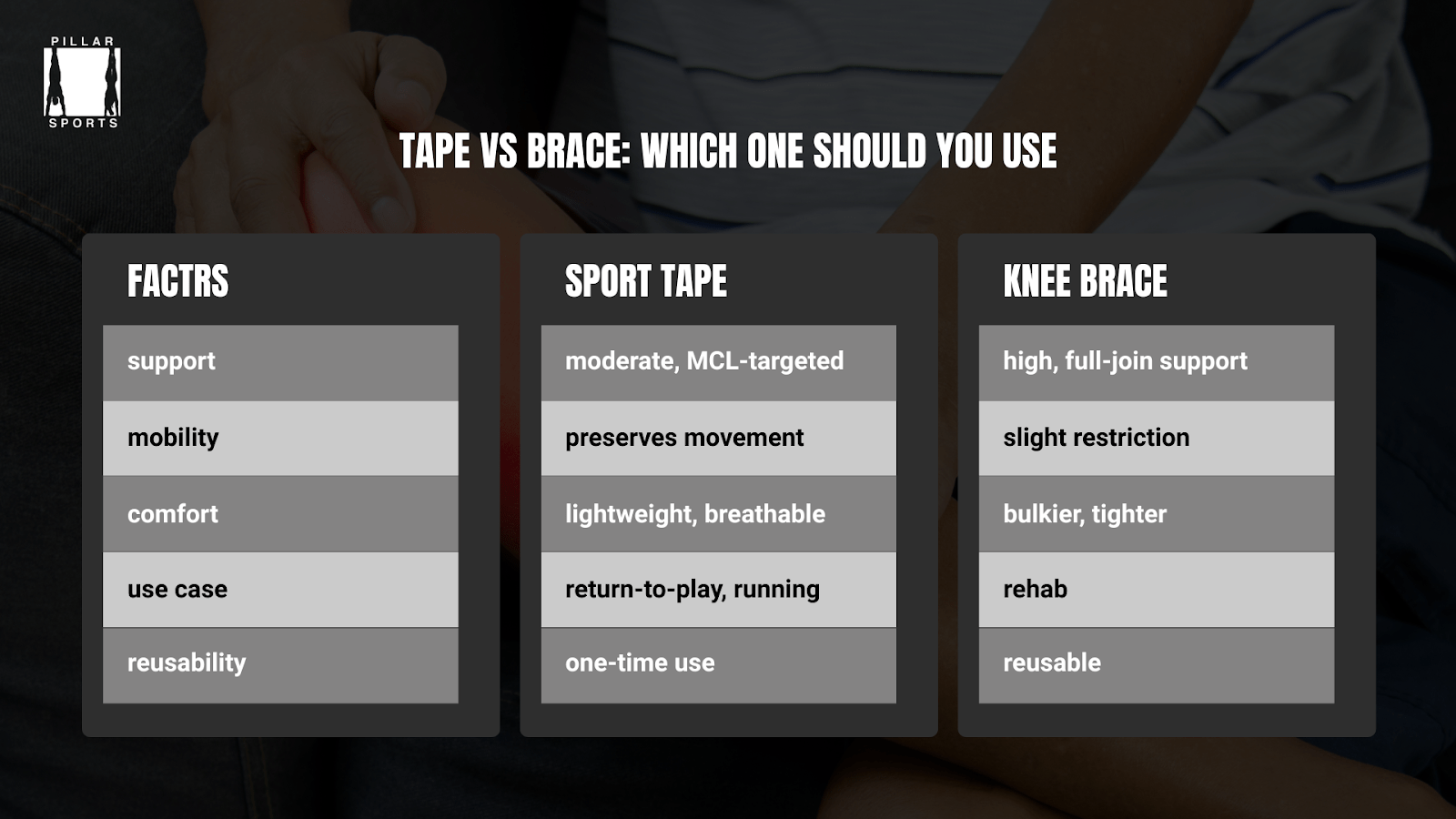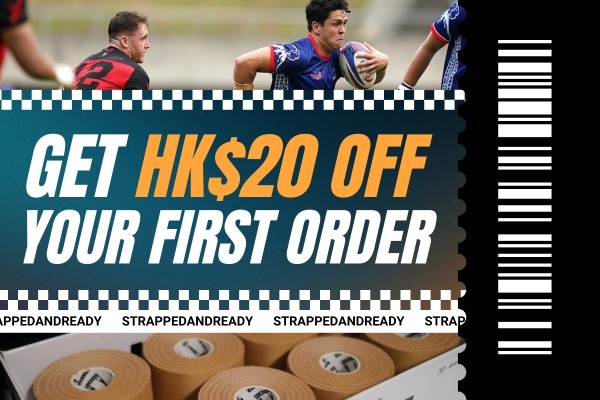
Please be very aware that this information is neither intended nor implied to be a substitute for professional medical advice. Always seek the advice of your doctor or other qualified health professional before starting any new treatment or with any questions you may have regarding a medical condition.
Athletes often face the decision: Should they brace their knee or rely on sports tape?
While knee braces offer firm stabilization, sports tape, especially rigid tape delivers targeted MCL support, proprioceptive feedback, and controlled movement.
This blog explores how sports tape compares to knee braces and when each is most effective.
For a full step-by-step guide to MCL-specific knee taping, check out our MCL Knee Strapping Tutorial.
Sports tape offers more than just physical support. It enhances proprioception, your brain’s awareness of joint position by stimulating skin mechanoreceptors. Studies show that taping can improve joint awareness and reduce positioning errors.
For MCL support, rigid tape reinforces the medial knee, helping control sideways motion while still allowing functional movement. It’s a lightweight, low-profile option that helps athletes return to play with confidence.

| Feature | Sports Tape (Rigid) | Knee Brace (Functional/Prophylactic) |
| Stability | Moderate, targeted to MCL | High, full-joint compression |
| Mobility | Preserves natural movement and can tailor to the amount of restriction needed in that stage or return to play. | Mild restriction |
| Weight & Bulk | Light and breathable, adjustable depending on how much tape they put on. | Heavier and bulkier |
| Best Use | Return-to-play, hairline sprain, runners, preventative and return to play progression | Rehab, high-impact protection |
| Reusability | Single-use; customizable fit | Reusable; consistent support |
Rigid taping allows precision and comfort while running or playing, but braces deliver more robust support when joint stability is a priority. Functional knee braces may slightly reduce MCL injury risk, particularly in contact sports—but evidence shows the benefit is modest
(This is an overview—visit our MCL Knee Strapping Tutorial for a full breakdown used by athletes in rugby.)
When used correctly and fitted properly, both sports tape and braces play a role in performance and injury prevention.
Explore gear designed for elite performance and support: Shop rigid sports tape for knees and accessories.
Sources:
This site is protected by reCAPTCHA and the Google Privacy Policy and Terms of Service apply.

Grab HK$20 OFF your first order of performance-tested tape & gear.
*when you spend HK$300 or more.*
Join 1,000+ athletes already training with Pillar Sports tape.
No spam. Unsubscribe anytime.